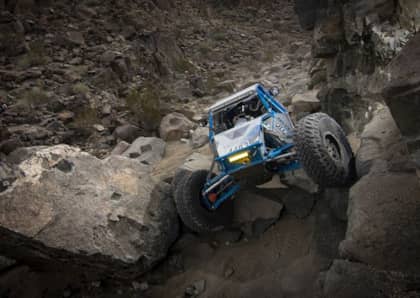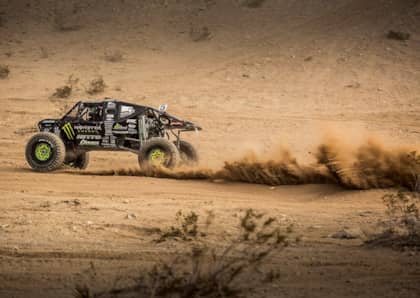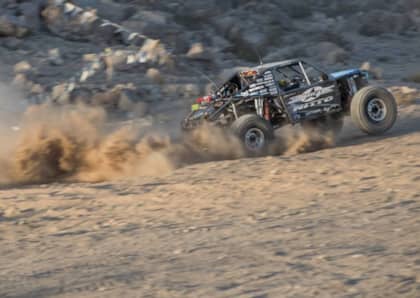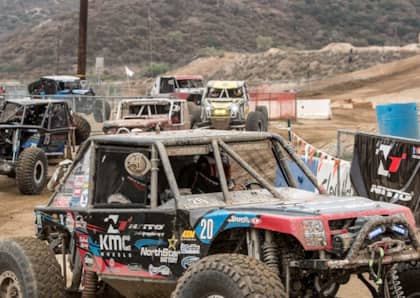No Limits: The Differences in 4400 Class Suspension
As Ultra4 Racing grows each year, new contenders enter the field with a seemingly endless combination of parts and chassis designs, each hoping to best the competition. Since its inception, the King of the Hammers race has held an incredible influence over the engineering and design of 4-wheel-drive off-road race vehicles. This constant evolution has pumped out some of the most successful vehicles in the Unlimited 4400 class, by putting them to the ultimate test. And although a few trends are on the rise, the 4400 class remains diverse, with several differences in front and rear suspension design. Here, we will breakdown three of the most popular suspension setups in more detail, highlighting the strengths and weaknesses of each.
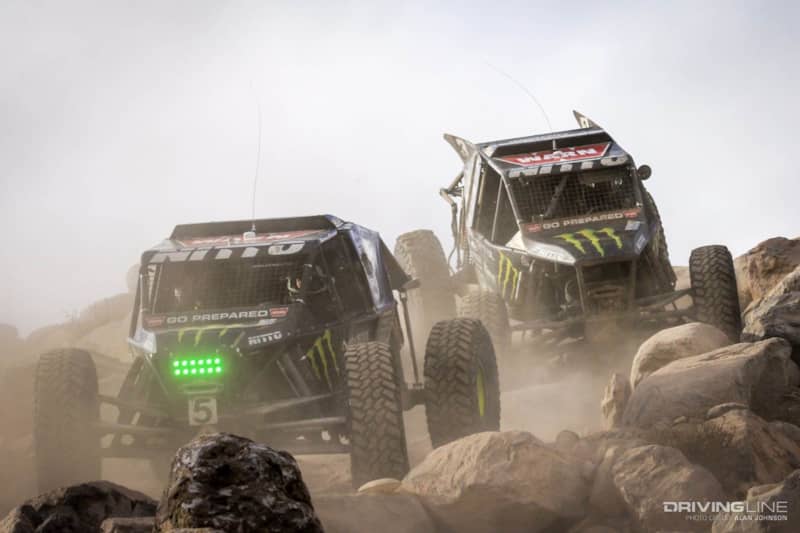
Solid Front/Solid Rear
Tried and true, solid front and rear axle setups have been the staple suspension of choice for most rock crawlers ever since the invention of the sport. Derived from the very first Willy’s Jeep CJs, this technology has remained mostly unchanged for decades. The methodology is simple; as one side of the axle drops down, the other side tucks up into the fender. Modern 4400 class Ultra4 vehicles with solid front and rear axles, such as Erik Miller’s, utilize a 4-link geometry with coilover shocks and bypasses, keeping much of the suspension components above the axle housing itself and out of the way. While solid axles tend to articulate better than other setups in the big rocks, and are usually stronger and more durable than their independent counterparts, they are much heavier than independent setups and thus require lots of shock damping and tuning to carry speed in the open desert, where the bumps come much faster. Some racers swear by this setup, and will likely never have a change of heart, meaning the solid front and rear axle Ultra4 car isn’t going anywhere soon.
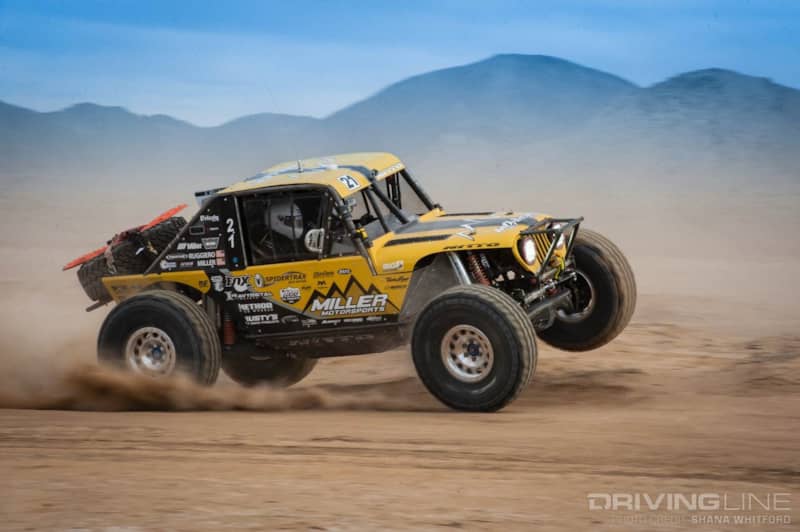
Independent Front/Solid Rear
Recently, many new Ultra4 cars are being built with an independent front suspension system paired with a solid rear axle. The idea behind this setup is to have an easily tuned, long-travel style front end, capable of taking rough open desert at triple digit speeds, but keeping a strong solid axle in the rear to keep pushing the car forward. Although highly debated around the KOH campfire, this setup has proven itself as a winning combination for several years, with the last three kings all utilizing an independent front suspension. Independent front suspension systems do have their weaknesses; the front differentials, half shafts, bearings, and other front drivetrain components take much more abuse as they articulate up and down with the tires. This requires very strong, proven and expensive parts to minimize failures. Still, advancements in IFS technology, especially with the growing popularity of AWD Trophy Trucks, are moving in a way to support even more abuse and horsepower, so it’s not likely this trend will slow down soon.
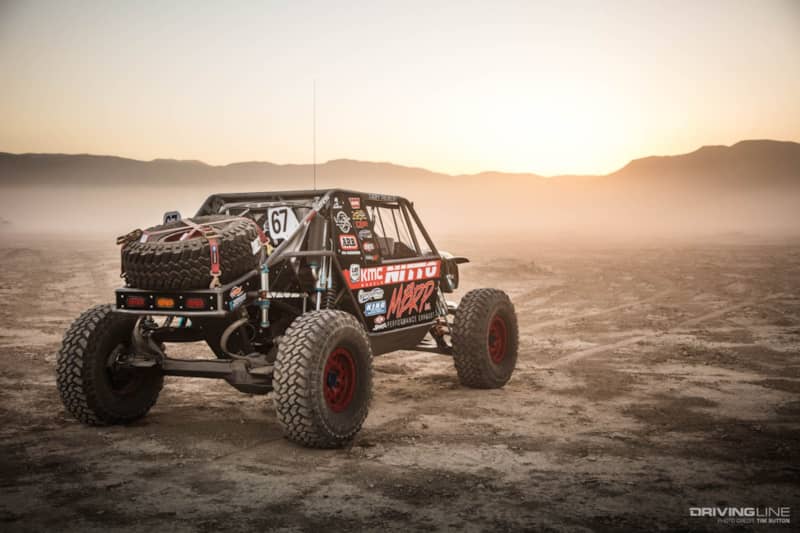
Independent Front / Independent Rear
Sometimes referred as the ugly duckling of the rock crawler world, independent front and rear suspension systems on Ultra4 cars is becoming more popular. While there aren’t many of them in the 4400 class, Cody Waggoner has been a proponent for years, and has wowed the crowd on numerous occasions with the spider-like movements of his race car. Jordan Pellegrino unveiled his brand new 4400-class independent front and rear race car just a few weeks ago, and will put it to the ultimate test in this year’s KOH race. In road racing, independent front and rear suspension is the cream of the crop, allowing for each wheel to independently react to the ground beneath it, keeping the vehicle stable in the center. The same science applies to off-road driving, allowing a vehicle with independent front and rear axles to articulate in odd ways over uneven terrain while remaining relatively stable. However, unlike road racing, Ultra4 racing subjects the drivetrain to lots of abuse. Slipping tires on loose gravel or sand, followed immediately by hard traction grabs on solid rock creates a start-stop-start effect on the drivetrain, which can be a recipe for broken parts on an independent suspension system. Still, these components are becoming stronger each and every year, so it may not be long before we see very reliable, fast Ultra4 cars with independent front and rear axles.
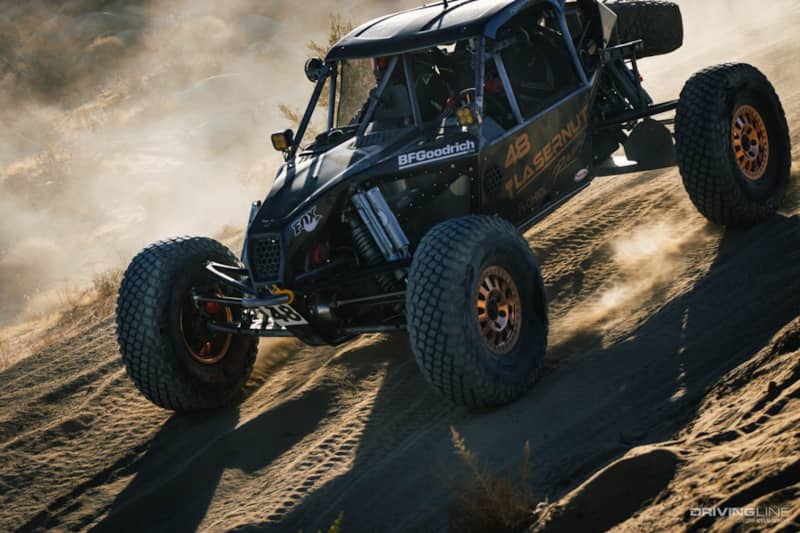
King of the Hammers has always been the make or break for those who seek to build the best 4-wheel-drive race vehicles in the world. Its unforgiving rocks combined with wide-open desert riddled with washouts, ruts and whoop sections requires a true dual-sport vehicle to conquer it. Whether you place your bets making up time in the rocks, or would rather pass multiple cars in the flat sections will depend on what kind of suspension you’ll be building. While still very much a matter of personal preference, only time will tell if one setup carries with it a consistent record of winning races over the next. Until then, come out to King of the Hammers and check out all the rigs to decide for yourself which 4400 class suspension system you’d choose if you were to enter in the battle to become the next king.




